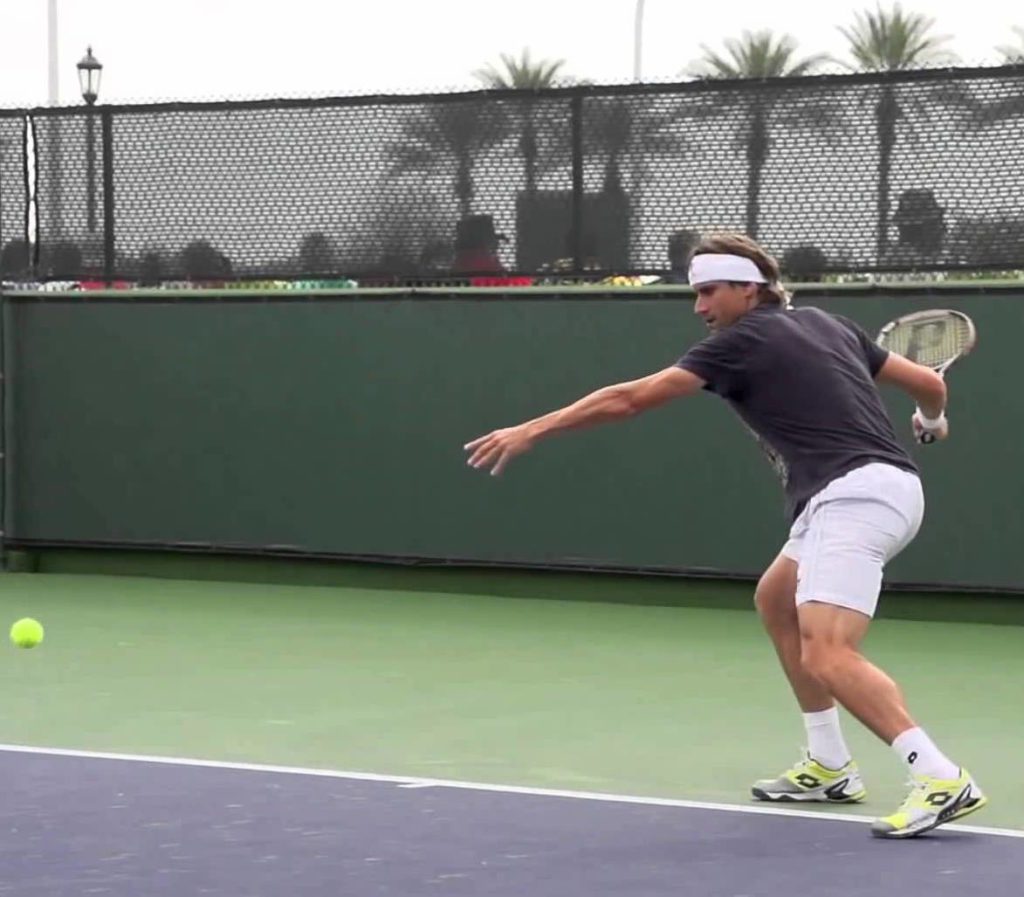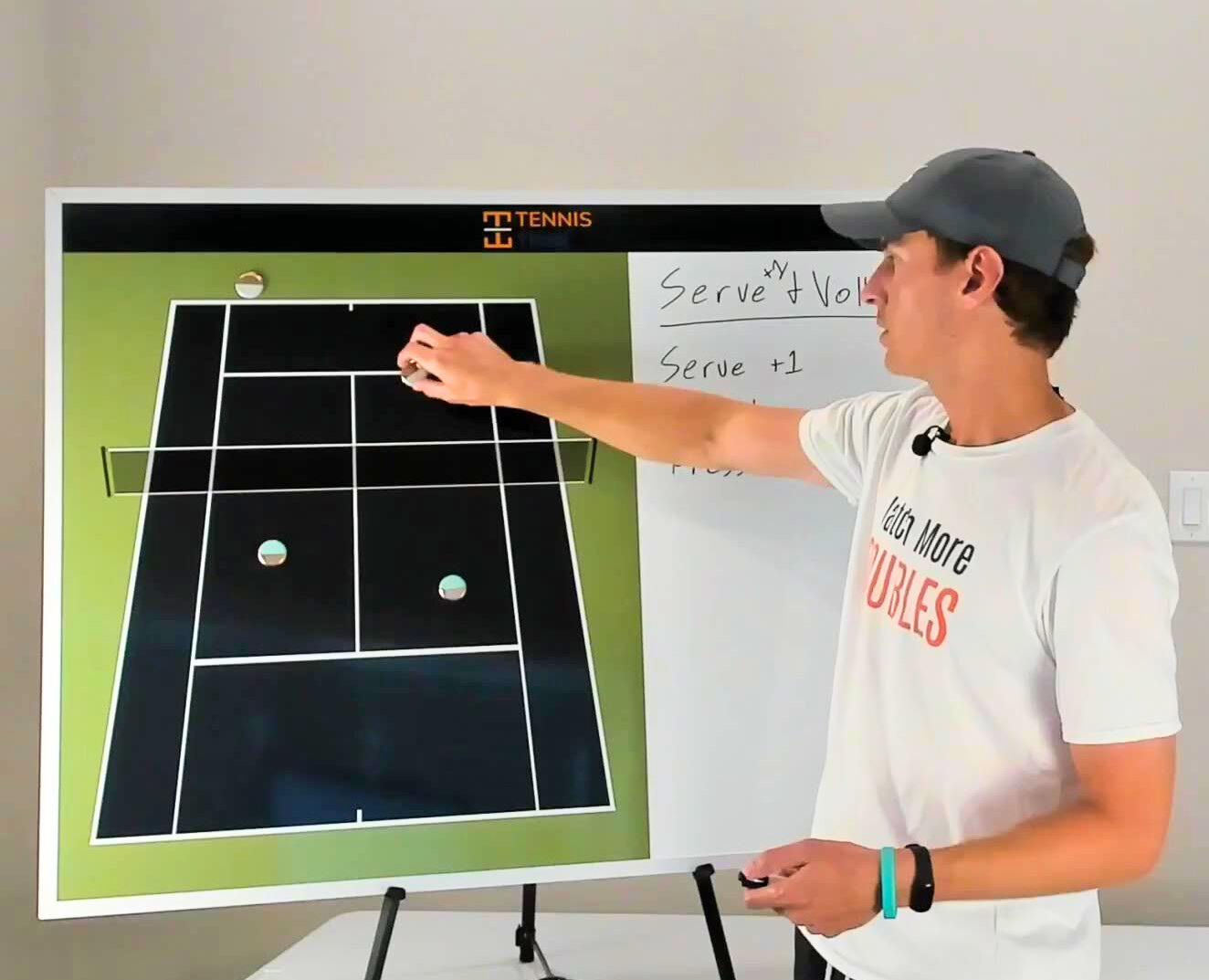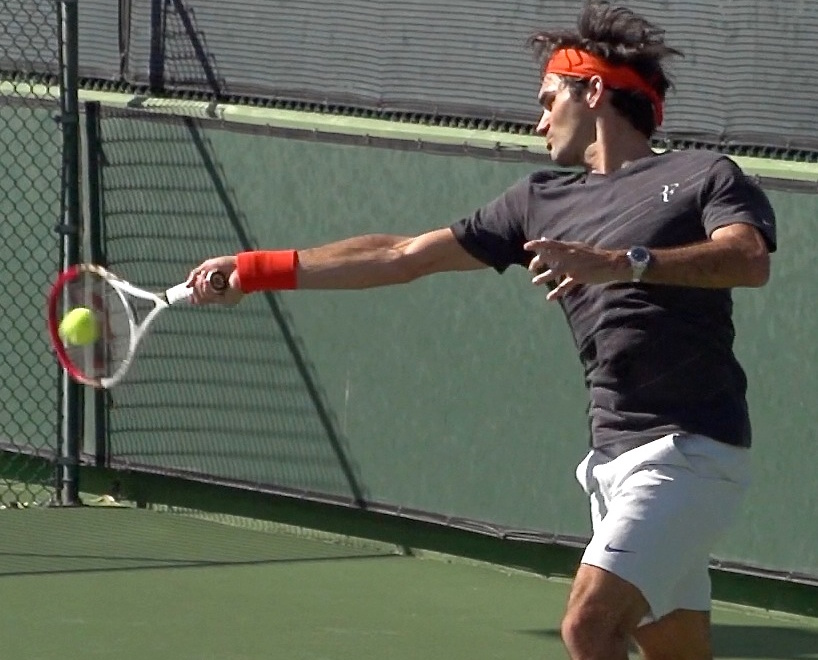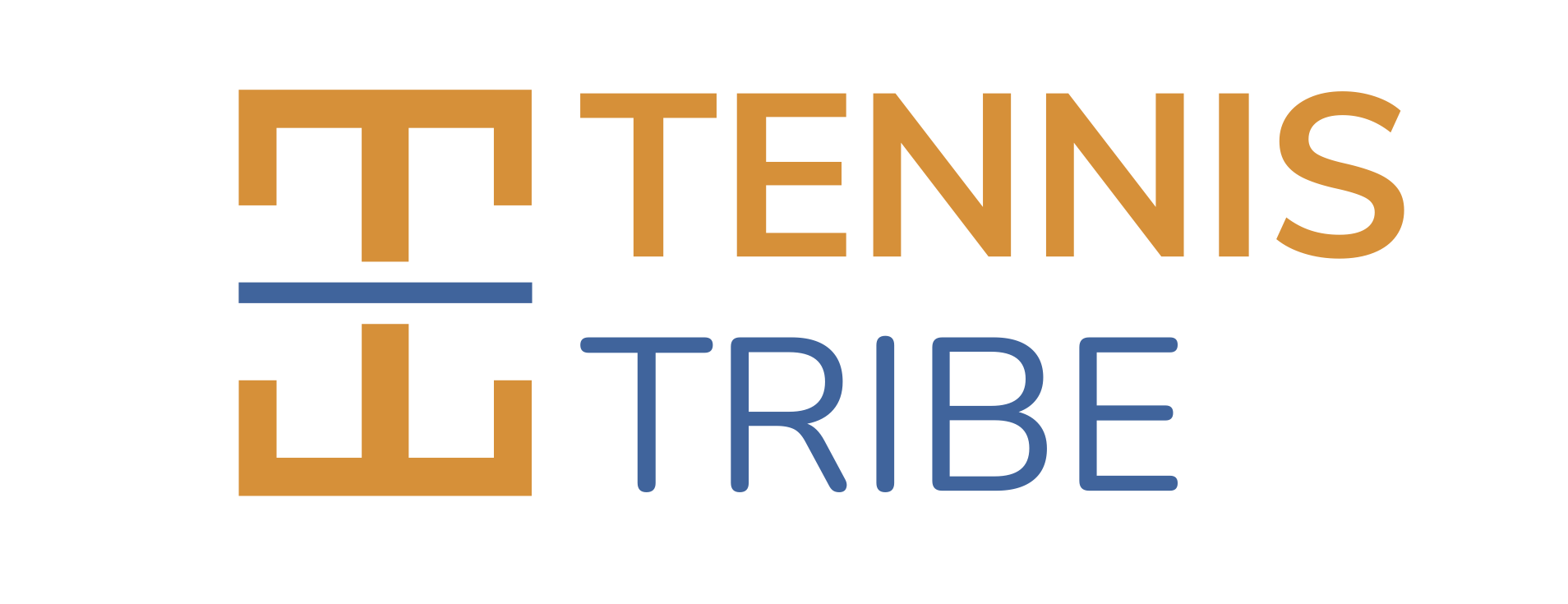In this lesson, we’ll be covering tennis forehand technique and drills. After reading this, you will walk away with actionable items for you to use on the tennis court and improve your forehand.
Tennis Forehand Technique for Beginners
To hit your forehand, like everything else in tennis, it will start with your footwork and positioning. You’ll want to make sure your feet are pointed towards the right, and your feet should be between a 45 and 90-degree angle from the net.

David Ferrer’s feet are pointed to the right, and if you put a yardstick in front of his feet, it would make about a 45-degree angle from the net. Beginner players may want to bring the left foot even further forward.
If you’re too open (less than 45 degrees or parallel to the net), then you will miss to the left. If you are too closed, then you will struggle to hit the crosscourt forehand with consistency and power.
>> Click here to make sure you’re using the right grip on your forehand!
Take your racquet back low. Many beginners don’t get this right, but your racquet needs to start pointed down at the court. Some advanced players and pros like to do a loop by bringing the racket back high before dropping it. Either way, the racket will need to be low and pointed down towards the court at about a 45-degree angle. Make sure your strings are pointed down as well.
When you start your swing, make sure to shift your weight from your back foot to your front foot. Swing the tennis racket up through the ball making sure you follow through over your shoulder. The strings should brush up the back of the ball, a little around the outside of the ball too.
When you make contact your strings must be pointed in the direction you want the ball to go.
MOST POPULAR COURSE!
25 Winning Doubles Tactics
Guaranteed to help you play smarter & win more matches.
- Over 50 video doubles lessons
- 60+ ATP & WTA points analyzed
- Nearly 3 hours of strategy content

Will Boucek – Doubles Strategy Analyst for ATP & WTA Players and Team USA at the 2024 Olympics
Common Forehand Mistakes Beginners Make
Beginners tennis players typically make one of two mistakes when they’re hitting forehands. The easiest way to know what you’re doing wrong is to see where the ball is going.
If you’re missing to the left then you’re likely making one of two mistakes.
- Your feet are in the wrong position. You need to bring your left foot around to the front and close your stance more [for right-handed players].
- The other possibility is you’re swinging too early. Wait on the ball another second before you swing.
Of course, the easiest way to fix this is to just aim further right. If what you think is straight, is actually left, then what you think is right will be straight. Over time you’ll get used to this.
If you’re missing to the right then you’re making the opposite mistakes.
- You need to bring your left foot around to the left more and open your stance.
- You are waiting too long to swing. Start your swing earlier.
Again, you can try just aiming further to the left. If what you think is straight, is actually right, then what you think is left will be straight. Over time you’ll get used to this and your brain will self-correct. Also, make sure you have the right racquet for a beginner. Many beginners use racquets that are too small which will cause mishits and frustration that can be easily avoided.
How to Hit a Topspin Forehand
Watch Novak Djokavic hit a slow-motion topspin forehands. The motion of the racket is up through the ball, strings are slightly down, and his racket head makes contact in front of his wrist as he whips it around the ball.
>> Check out the Topspin Pro training aid to improve your topspin faster!
If you want more topspin on your forehand, then you have to focus on two things. The first key to this is to make sure you’re hitting around the outside of the ball.
To do this, you might need to close your stance a little by bringing your left foot around and swinging earlier to make sure your strings are getting around the right side of the ball. You’ll also need to lead with your racket head instead of your wrist (see image further down the page of Roger Federer).
The second key to this is to make the racket’s trajectory up, but still through the ball. The easiest way to fix this is by dropping your racket lower on your backswing. It will force you to swing up more.
You may need to make your forehand grip more western that your current grip.
Forehand Technique for Advanced Players
Advanced players typically have topspin down, and are able to place the ball well on the court. If you’re this type of player, then you’re probably looking to add more power and spin to your forehand in a faster-paced game.
There are typically a few reasons advance players struggle with their forehand. Here are the two most common mistakes I see.

This 71-page Ebook will skyrocket your return game
Proven Return Strategies Against Any Type of Server
EVERYTHING I know about return strategy. I teach this information to 3.0 club players and ATP/WTA top 10 doubles teams.
Mistake #1: Not Getting in Position
The first question you need to ask yourself when you miss any shot is this.
“Was I in the right position?”
For advanced players, the reason we miss is typically that we were lazy with our feet and didn’t get in the right position for the shot. Double-check your footwork first because if you’re not in the right position for the shot, then whatever you do to compensate will be inconsistent and often ineffective.
Make sure your body and feet are lined up to the 45-degree angle with the net. Many high-level players hit their forehand too open and lose control, or too closed and over-rotate their body.
Mistake #2: Not Getting Around the Ball
One of my doubles partners from college had an issue where his forehand would break down in tight matches. He would swing out and miss long, or try to spin it in and hit it in the net.
For most players (USTA 3.5 and better) this happens for one reason. Your racket didn’t get around the outside of the ball.
When you make contact, it’s likely that your wrist is in front of your racket head. This shouldn’t happen if you want a consistent forehand. The racket head should be swinging out through the outside of the ball so that when you make contact it is even with or in front of your wrist.

Notice how Federer’s racket head is in front of the wrist when it makes contact with the ball. This allows the ball to stay on the racket longer, creating more topspin and control.
When you hit the inside of the ball, it is difficult to get good topspin and your forehand will flare out to the right. You can hit powerful forehand winners this way, but you’ll make a lower percentage of them.
Tennis Forehand Drills
The best forehand drill is to find a good hitting partner and just hit a ton of forehands. Here is a good hitting drill you can go through after a good warm up.
Crosscourt Forehand Drill
This drill will help improve your forehand consistency. Play this game off the ground, and either player can feed. Only half of the court is in. You can include the doubles alley or play singles only to make it more difficult.
You’re playing off the ground to 11, but there’s a catch. The point does not start until you make 10 balls in a row. You can adjust this number based on experience, but this will force you to focus on consistency before trying to hit winners.
Depth Forehand Drill
Play the same game as above, but count any ball short of the service line as out. This is great practice for hitting your forehand deep in the court. Keeping the ball deep in the court will make your opponent off balance. You will force them to hit shots from their heels, which is a weak position.
For a great footwork and cardio workout, you can add a rule where backhands count as a loss of a point and make the doubles alleys in.

This 55-page Ebook includes EVERYTHING you need to know
Serve Tactics Guaranteed to Make Holding Serve Easy
Learn to hide your weaknesses, force return errors, and create game plans with your doubles partner to hold serve more often.
Keep Practicing Your Forehand!
Practicing with these drills will help you hit more consistent forehands. If you feel like you’re missing or something doesn’t feel right, go back to the basics by swinging easier and starting with the short court, or mini tennis.
Once you have the fundamentals of good tennis forehand technique down, you can start swinging faster and improving your forehand’s power, spin, and accuracy. However, it all starts with proper technique 🙂

very good advice